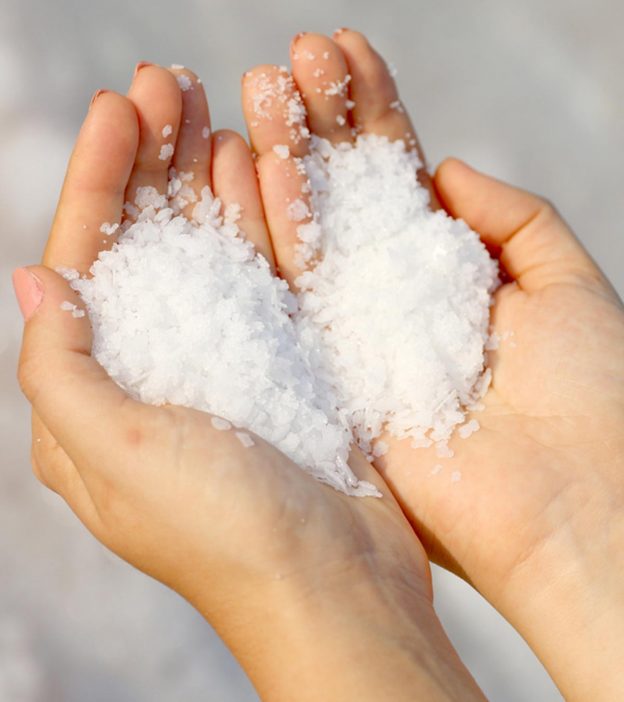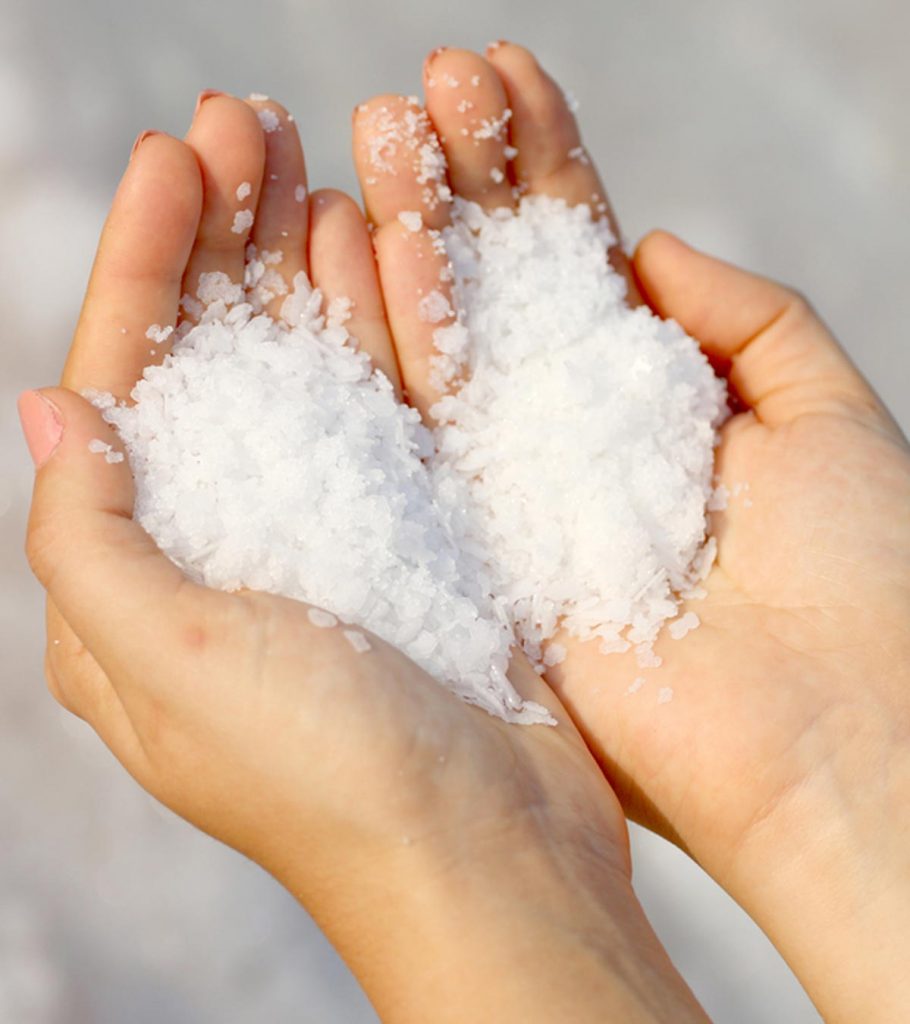[ad_1]

There are a variety of homemade pregnancy tests available, each with differing degrees of accuracy. Several women consider the salt pregnancy test as a natural DIY method to determine whether they are pregnant. Medical specialists do not advocate it because it is not backed by scientific evidence, despite its popularity due to its ease of use.
Read this post to know how the salt pregnancy test works and whether it is accurate.
How Is The Homemade Pregnancy Test With Salt Done?
To take the test, you need one or two tablespoons of common table salt, a sample of the first morning urine, and a small cup (preferably a transparent one).
- Put salt into a cup.
- Collect a small amount of urine in a separate container.
- Pour the urine over the salt and wait for any changes.
- If the mixture turns milky or cheesy, it could indicate you are pregnant.
How Is The Salt Pregnancy Test Said To Work?
Proponents of the test believe that hCG combines with salt to give a changed or curdled texture. However, there are no scientific studies to explain how salt would react with hCG to cause a reaction.
How Accurate Is Salt Pregnancy Test?
The salt test for pregnancy is not accurate or reliable, like any other DIY test for pregnancy. It has no evidence from studies or medical organizations, nor does any medical expert vouch for its accuracy.
There are only two possible outcomes, and there is likely to be a 50% chance that you could be right.
When Should You Take The Salt Pregnancy Test?
Most people believe that the first morning urine could give better results for the salt test since it contains the highest level of hCG hormone (1).
You need to understand that the salt test is just a theory. You may rely on a home pregnancy test kit or seek medical advice (for blood and urine tests) for confirmation of pregnancy.
How To Read Salt Pregnancy Test Results?
According to popular belief, allowing the salt–urine mixture to sit for some time might help in delivering the results.
- A positive salt test result shows the mixture as milky or cheesy. In some, the urine may turn foamy.
- A negative result shows no changes—the mixture remains intact with the urine and salt.
Alternative Options To Test For Pregnancy
You may consider over-the-counter pregnancy test kits available online or in drug stores. Your doctor can also check for pregnancy by testing your blood and urine samples or via ultrasound.
- Home pregnancy test kits are affordable, reliable, and provide results in a few minutes. They detect the presence of the hCG hormone in the urine (2). Sometimes, they might result in false-positive or false-negative test results. To get an accurate reading, you may consider taking the urine pregnancy test not before one week after the missed period. Also, take the test using your first urine of the day as it has the highest levels of pregnancy hormones.
- Clinical pregnancy tests involve a blood test and urine test, or either of them to detect the pregnancy. The urine testing method works similar to the home pregnancy test, but the sample is sent to the laboratory for testing. Blood tests are again of two kinds—qualitative (checks the presence of pregnancy hormone) and quantitative (checks the amount of hCG hormone) (3).
When To See A Doctor?
If you suspect you are pregnant, it is better to consult a doctor. You may start experiencing early pregnancy symptoms such as abdominal pain, fatigue, food cravings or aversions, morning sickness, frequent urination, darkening of the areola, and more that could signal a pregnancy (4).
Also see a doctor if you miss your periods for two consecutive cycles and test negative in a home pregnancy test.
Does The Salt Test Predict The Gender Of The Baby?
According to popular Romanian folklore, sprinkling salt over a pregnant woman without her knowledge could indicate the baby’s sex. If the woman abruptly rubs her nose, it is a girl; and if the woman rubs her lower lip, it is a boy. Remember that this has no scientific backing.
1. Do homemade pregnancy tests work?
Homemade pregnancy tests or DIY tests are not backed by research and may or may not give accurate results each time. Hence, even though the tests seem to work and you may observe a reaction, the results must be confirmed by an Ob/Gyn.
2. What color is your urine when pregnant?
A home-based salt pregnancy test, in which the salt is believed to mix with hCG in urine to produce an altered or curdled texture, could be an inexpensive approach to identify pregnancy; however, there is no scientific evidence to support it. While the test can be done for fun, as the test only requires two teaspoons of common table salt, a morning urine sample, and a small cup, the results should not be trusted. Instead, purchase a home pregnancy test kit and confirm your pregnancy with your doctor.
Infographic: Are There Other Home Tests For Pregnancy?
Similar to the salt pregnancy test, other tests use simple raw materials readily available at home. These tests are cost-effective but are not scientifically accurate, and you must not base your decisions on the results of these tests. The infographic below mentions some DIY pregnancy tests you may try to quench your curiosity.
Key Pointers
- Salt pregnancy test is a DIY home pregnancy test that several women use to know if they are pregnant.
- The test involves pouring the urine over the salt. Proponents believe that the hCG in urine combines with the salt to give a curdled product, confirming pregnancy.
- However, the test lacks scientific evidence. Hence, medical specialists advise against its use to confirm pregnancy.
- Home pregnancy test kits and clinical pregnancy tests are the most accurate and reliable ways to confirm pregnancy.


[ad_2]
Source link
